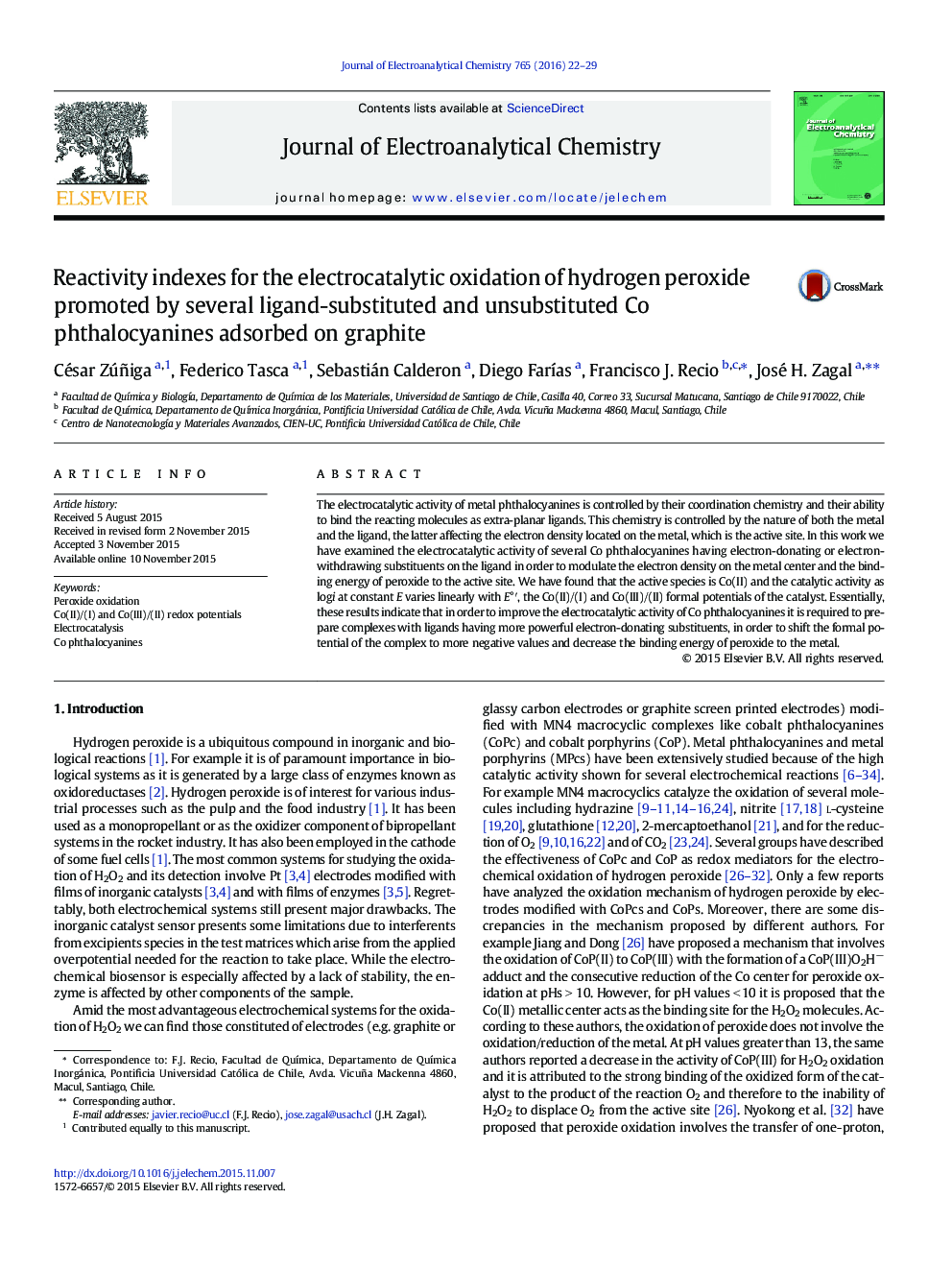| Article ID | Journal | Published Year | Pages | File Type |
|---|---|---|---|---|
| 218029 | Journal of Electroanalytical Chemistry | 2016 | 8 Pages |
•Co phthalocyanines catalyze the oxidation of hydrogen peroxide.•The catalytic activity strongly depends on the nature of the ligand.•The active site is Co(II) and Co(III) is inactive for the reaction.•The catalytic activity plotted versus the Co(III/II) potential gives a linear correlation.•The linear correlation seems to be part of an incomplete volcano correlation.
The electrocatalytic activity of metal phthalocyanines is controlled by their coordination chemistry and their ability to bind the reacting molecules as extra-planar ligands. This chemistry is controlled by the nature of both the metal and the ligand, the latter affecting the electron density located on the metal, which is the active site. In this work we have examined the electrocatalytic activity of several Co phthalocyanines having electron-donating or electron-withdrawing substituents on the ligand in order to modulate the electron density on the metal center and the binding energy of peroxide to the active site. We have found that the active species is Co(II) and the catalytic activity as logi at constant E varies linearly with E°′, the Co(II)/(I) and Co(III)/(II) formal potentials of the catalyst. Essentially, these results indicate that in order to improve the electrocatalytic activity of Co phthalocyanines it is required to prepare complexes with ligands having more powerful electron-donating substituents, in order to shift the formal potential of the complex to more negative values and decrease the binding energy of peroxide to the metal.
Graphical abstractFigure optionsDownload full-size imageDownload as PowerPoint slide
